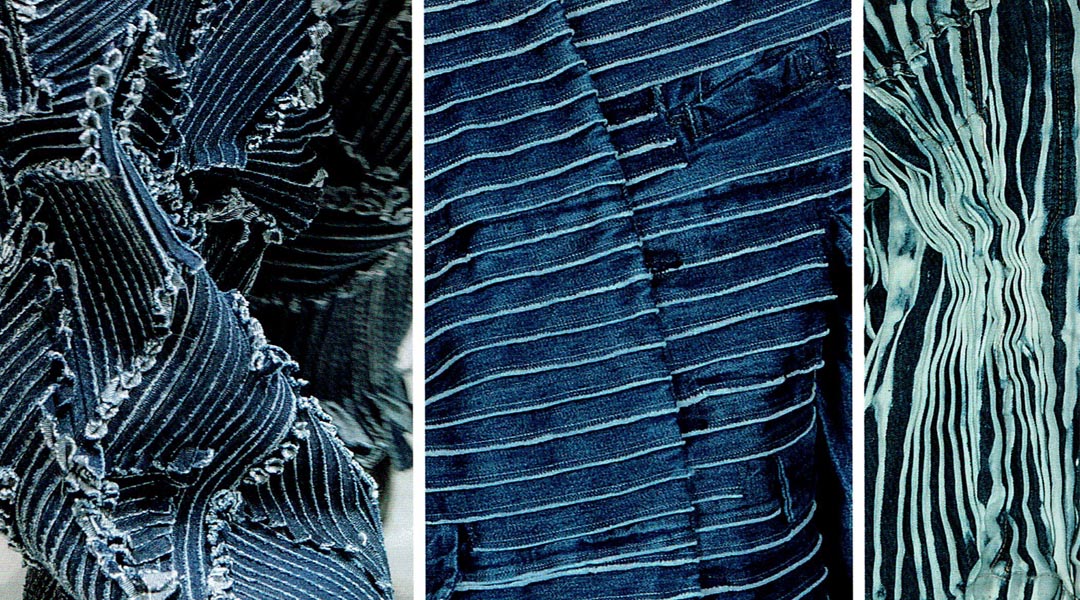Original natural indigos arrive in numerous casts from rich deep reddish to deep greenish depending on where in the world the indigo originates. India is the original country of origin but natural dye extraction is practised in many other countries in the near and far east today.
Extracting the indigo as a dye from the natural plant requires much skill and lots of labour and patience. Originally and even now the dye works the best on cotton fibre. Although it is quixotic and does not easily adhere to the host fibre bleaching down quickly with both wear and exposure to daylight.
Dyeing the cotton yarn, which was hand spun from the raw cotton balls, was all done by hand therefore the consistency and shade varied enormously. This led to pronounced streaks in the eventual fabric, a characteristic which has become synonymous with an old denim fabric. An effect which we try to emulate today to "pretend" that what we are designing is as close to the old original as possible.
Originally, and even today as a hand craft, indigo plants are soaked in water, weighted down and left to ferment over night. After which the scum is removed and the liquid beaten hard until bubbles form and thickening takes place. It is then passed through a sieve to remove the liquid, leaving behind the indigo paste which is used for dyeing after it has dried into chunks. The indigo rocks or chunks achieved from recovered dye paste above are ready to be re-used. In this case you will see how much reddish cast this particular indigo is.
Such indigo chunks as well as being used for dyeing, were used as paint or drawing materials, or used to paint onto fabric as hand decoration.
The original craft of indigo dyeing was a manual and messy business. Filthy water, dye sludge, and scum residue are all bi-products of the hand dye process.
The water residue from natural indigo hand dyeing takes on a greenish cast whereas the dye itself seems to cast reddish. Such is the nature of natural plant derived indigo. Modern chemical indigos are more controllable but nevertheless the locality where it is used has an effect on the cast due to the PH in the water supply.
The craft of hand dyeing seems romantic but in the case of indigo the ultimate contamination was and still is a major pollutant to the environment. In the past indigo artisans didn't care about cleaning the old water before throwing it onto the fields whereas now it is global law to clean up the water to at least the same level of cleanliness as when it was extracted from river or stream. In fact many modern industrial mills have an enclosed recycling system for their dirty water, cleaning it and then re-using to dye again. When the water has been used too much it is then cleaned to a higher level of purity before being discharged into the river or stream from whence it came.






























